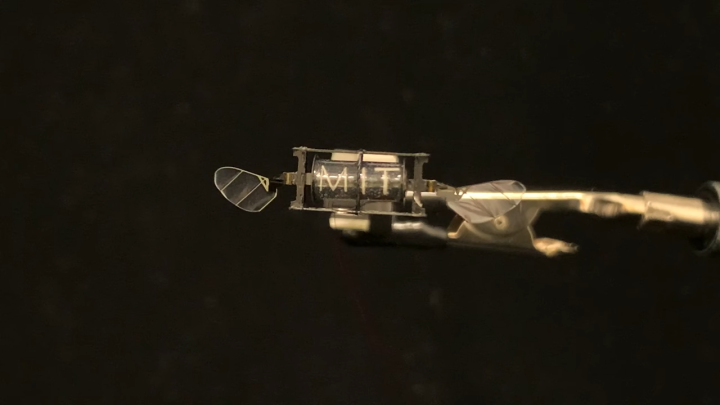Fireflies are one of the best parts of warm summer nights. The dancing, flickering lights of these tiny bugs have enamored people for centuries. Now, a group of scientists at MIT have created robot lightning bugs inspired by nature. Not only can these robots fly, but they also emit light. Just like real-life fireflies.
From performing simple tasks to helping explore the Moon, humans have found many uses for robots. But what could robots the size of an insect do? Well, the possibilities, as it turns out, are quite endless.
Check out these robot lightning bugs that MIT researchers created
Making robot lightning bugs that are built to insect-scale isn’t easy. And, there are a lot of factors to consider. After all, at such a small size, these robots can’t really be fitted with sensors and other tracking tech. That’s not even taking into account the need to keep the robot’s weight down as low as possible to make flying smoother.
But, because these robots can emit light, the researchers can track them without sensors. Instead, all the researchers need is a camera capable of picking up the emitted light. Normally, we’d have to rely on bulky infrared cameras. Which would make the robot’s usefulness outdoors unlikely.
However, the researchers proved they can track the robot lightning bugs using a standard smartphone camera. And, the researchers say, they could even teach them how to communicate using their lights, similar to how real fireflies communicate.
The glow up
One of the most challenging parts of the process was creating small robots capable of emitting light. While it might not sound difficult, you still have to take the weight and overall size of the robot lightning bugs into account. As such, the researchers at MIT had to embed minuscule electroluminescent particles into the artificial muscles the robot utilizes.
Altogether, the process added around 2.5 percent more weight to the robot. However, it didn’t affect its flight performance, a key factor the researchers had to consider. Another intriguing part of these robots is how they move around.
Unlike drones, which require propeller-like systems to move around, the robot lightning bugs use artificial muscles capable of flapping built-on wings. That means that MIT’s robot is actually flapping wings to take off, instead of forcing air underneath it like a propeller system. To make the light-emitting qualities work, the researchers had to create an electrode that wouldn’t block light.
To do this, they used highly transparent carbon nanotubes. These nanotubes are only a few nanometers thick. As such, they allow the light to pass through them easily and clearly. The researchers published a paper on the robot lightning bugs in IEEE Robotics and Automation Letters earlier this month.
